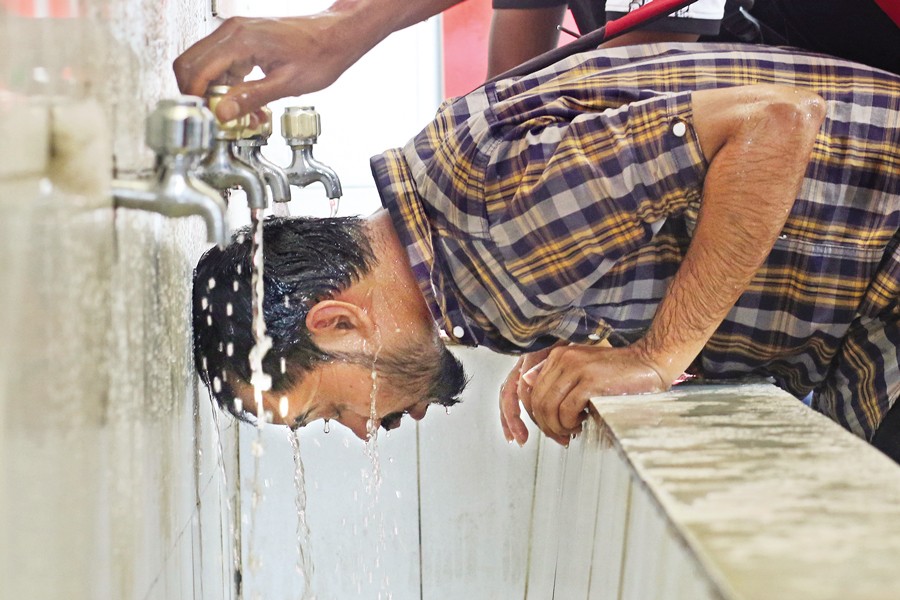
Published :
Updated :

Dhaka along with 14 other districts of Bangladesh has been experiencing a mild to moderate heatwave, said the Met office. Increase in frequency, intensity and duration of the heatwaves is now the new normal. Of course, ultimately, climate change is to blame for this situation. But can we really wash our hands of the fact that Dhaka is getting hotter by the day? According to an estimate, Dhaka's average temperature has increased by 3 degrees celsius in the last 20 years. That means just a decade ago it was less hot or cooler by1.5 to 2 degrees celsius. No wonder, rapid but unplanned urbanisation is the main culprit that is behind Dhaka's becoming a veritable concrete jungle that captures more heat than it can radiate. This is a phenomenon that the British climatologist Gordon Marley first observed in 1958 and termed it 'Urban Heat Island (UHI)'. However, by whatever name you might call it, the experience of it cannot be said to be pleasant. Dhaka could be far cooler if the government itself, the previous autocratic government, to be specific, did not mercilessly felled trees in the name of development work.
Consider the case of the Suhrawardy Udyan, which was once called the 'lungs of Dhaka'. But that 'lungs' had to be forcefully removed to build what the then Liberation War Affairs ministry called 'Suhrawardy Udyane Swadhinata Stomvo Nirman (Independence Pillar Construction at Suhrawardy Udyan'). And to implement that grandiose scheme, hundreds of trees were cut down as if with a vengeance. It was indeed an act of vengeance. That is because the Suhrawardy Udyan was created by someone who to the then autocratic political establishment was its number one adversary. So, despite Suhrawardy Udyan's immense value from the point of view of its being a site of rich environmental heritage, the then government went ahead with decimating it. A group of environmental activists, among whom was also our present interim government's Adviser for Environment, Forest and Climate Change, tried their best to save the Suhrawardy Udyan by filing writ petition in the High Court. But their efforts ultimately fizzled out. Like the Udyan's children park was abandoned for reasons not hard to understand, the present Suhrawardy Udyan is also a mere shadow of its former self now with a few trees standing here and there and the empty space created by clearing it of trees is now occupied by vendors, conjurors, sellers of street foods and teashops. Had Suhrawardy Udyan been not thus destroyed, it could contribute towards making the city cooler and providing sanctuary to dozens of bird species and small animals. The interim government can and should now take up a project to restore the Suhrawardy Udyan and engage experts including its adviser for environment, Syeda Rizwana Hasan, who is herself a well known environment crusader, to redevelop the Udyan and bring back its former shape as far as possible.
Small businesses operating there can be relocated elsewhere in the city to protect their livelihood. But the effort of the government should not end with taking steps to just revive and protect the Suhrawardy Udyan. Steps should also be there to find out more such spots in the city which were once small gardens, fields or parks, but now in disuse and convert those into small Udyans. The now lost wetlands, both within and surrounding the city, which were vital components of the city's natural ecosystem may not be revived. Even so, it is important to protect whatever is still left of them. Long story short, Dhaka needs more trees to protect itself against its rising temperature as well as the increasing number of heatwaves.
sfalim.ds@gmail.com


 For all latest news, follow The Financial Express Google News channel.
For all latest news, follow The Financial Express Google News channel.